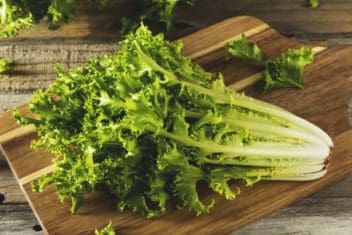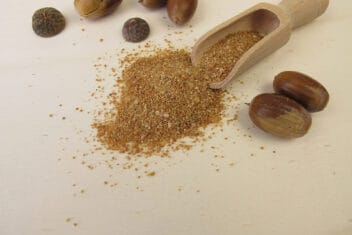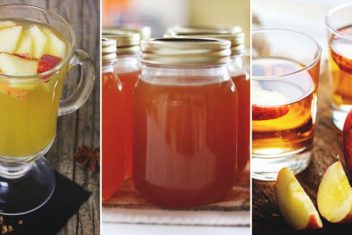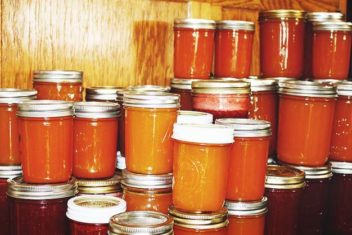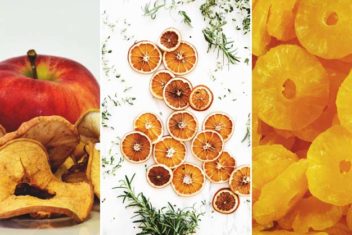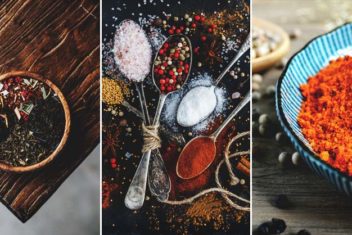When you are making your own jellies, jams, and preserves at home, you’ll likely notice one common denominator among recipes for jelly and jam. They all call for pectin.
But what is pectin – and where does it come from?
Believe it or not, pectin isn’t just something that can be purchased from the supermarket shelves. It’s also incredibly easy to make at home. Here’s everything you need to know about pectin, as well as a useful recipe so that you can ditch the grocery store kind for good.
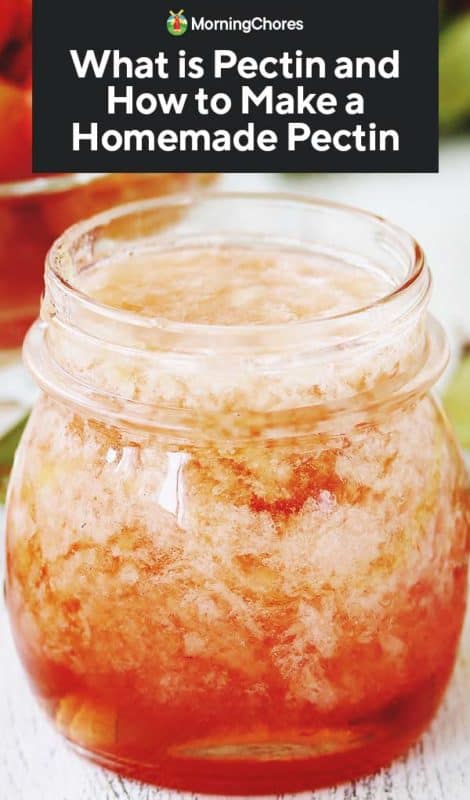
What is Pectin?
A natural ingredient, pectin is a specific kind of starch known as a heteropolysaccharide. It is found organically in the cells of certain vegetables and fruits. Combined with acid and sugar, it can give jams a gel-like structure that is more solid upon cooling.
Most people turn to storebought pectin when they are making jams and jelly at home. However, you can also make homemade pectin. Pectin is naturally found in high quantities in certain fruits like quince and apples. The seeds and rinds of citrus fruits also contain a lot of pectins – in fact, most storebought pectins are derived from citrus fruits.
Varieties of Pectin
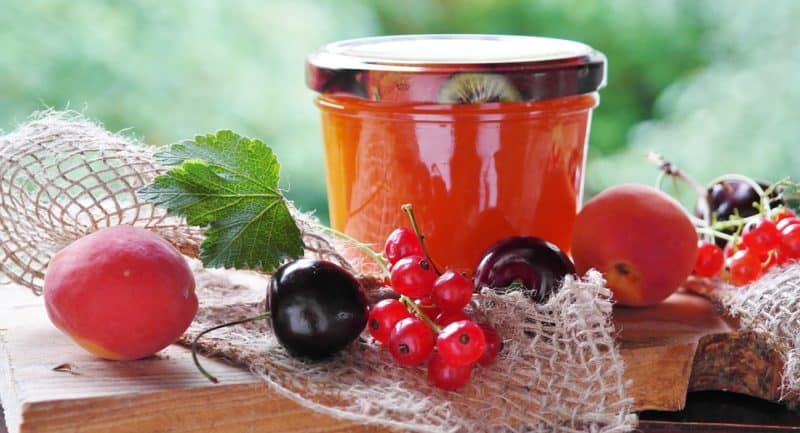
You will see two primary types of pectin when you head to the stores: low methoxyl and high methoxyl.
The most common variety that you will see in stores, high methoxyl pectin, is often referred to as either “fast-set” or “slow-set,” this type of pectin is used in most traditional canning recipes for jellies and jams. Fast-set is used for chunky mixtures, while slow-set is best for clear, smooth jellies.
The other type of pectin, low methoxyl, is a good alternative for sugar-free preservation. Instead of sugar, calcium is used for that final set. This kind of pectin is often marketed as “light” or “sugar-free.”
Within these two categories, there are many other varieties of pectin to be aware of. From dry pectin to liquid pectin, there are even pectins out there for freezing and instant jams.
Each type of pectin has different uses and behaves in a different manner. Therefore, if you are following a canning recipe, it’s important to read it carefully to figure out which type of pectin it calls for – otherwise, it can destroy your final results.
Uses for Pectin
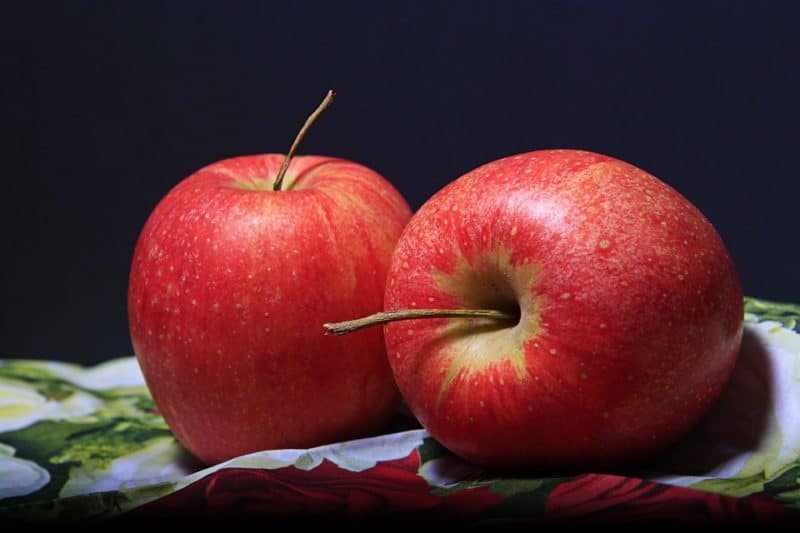
Pectin, whether homemade or storebought, is often used in canning and as a thickening agent for jams and jellies made from fruits low in natural pectin. Stone fruits, rhubarb, pears, and strawberries are all low in pectin, so supplementing with additional pectin is a great way to thicken up your recipe.
Some fruits just have naturally low levels of pectin. It’s easy to tell which fruit will be high in pectin or not based on how easily they can be squashed. Think of a raspberry, for instance – it squishes down very easily, with very little force.
An apple, on the other hand, is not so easy to squish. These fruits have lots of pectins. Strawberries or raspberries, by contrast, do not.
Pectin can be used to thicken up recipes that have these “squishier” fruits. You can also add pectin as an alternative to sugar, which is often used to properly set a jelly or jam. Pectin can help the mixture gel up without adding tons of calories from sweeteners.
Pectin is most commonly used in the creation of jams and jellies, but that’s not all it’s good for. You can also use it in foods that require thickening or as a fat substitute, in some cases.
Why You Should Make Your Own
Storebought pectin has a lot of uses in your cooking and food preservation efforts. However, the homemade stuff is even better than what you would buy at the store. Not only is it better for your health, containing no artificial ingredients, but it also comes from natural sources.
Unlike gelatin, which is often used as an alternative, pectin is vegan and vegetarian. It has no animal parts and no added sugar. It is an important part of making your own jellies and jams, and without it, your recipes will just fall flat.
Tips for Cooking with Pectin
Pectin has very little flavor. It may give your food a bit of bitterness, but usually, homemade pectin will taste like the fruit from which it is derived.
When you cook with pectin, make sure you follow a specific recipe. You will want to know exactly which type of pectin is necessary and exactly how much.
The recipe will also tell you how much to use. Typically, high methoxyl pectin should be cooked at high temperatures with sugars and acid to create the thickening effect you are looking for. Low methoxyl pectin, though, can usually be activated while sitting at around 65 degrees – or room temperature, in most cases.
Therefore, high methoxyl pectin should be added early in the cooking stages, while low methoxyl is added later on. Liquid pectin, by contrast, is not added until you are almost done cooking.
Keep in mind that you should always continue to follow the recipe exactly, making no adjustments for increased amounts of pectin. In other words, don’t reduce the amount of sugar you use if the recipe doesn’t ask you to. Even if you add more pectin, you need to have the amount of sugar called for in the recipe because it helps with the gelling process. If you want to use less sugar, rather find a sugar-free recipe.
Our Recipe for Homemade Pectin
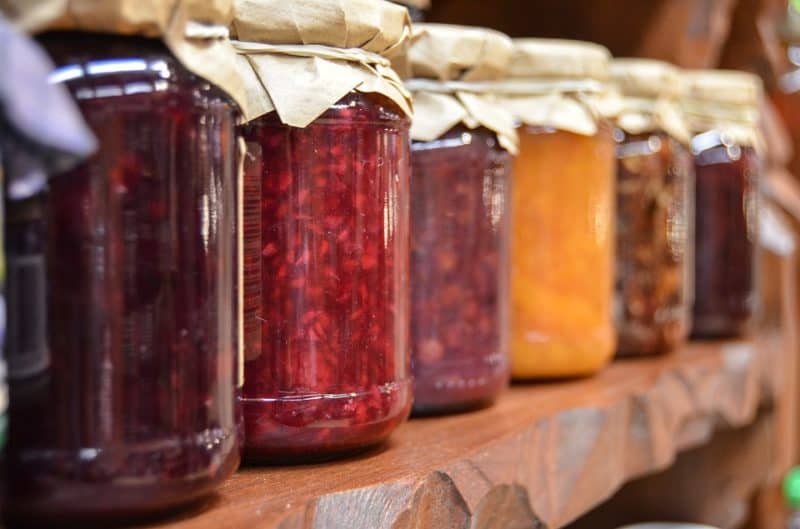
When you are making homemade pectin, always start with the very best ingredients. As with anything, the quality of your finished product will only be as good as the quality of the ingredients you used.
Pectin can be very expensive when you purchase it at the store. Therefore, making homemade pectin is a great way to cut down on costs while also improving the quality of your jellies and jams.
If you are making it from apples, for instance, only use small, slightly under-ripe ones. This will not only allow you to make use of fruit that you normally would have thrown out or wasted, but it will also allow for a superior finished product.
This recipe yields six half-pints of pectin and calls for apples as the fruit of choice. However, you can also use other fruits such as berries. Apples, particularly crab apples, work best for making it because they have the richest concentrations of the thickener.
If you use other fruits, like berries, you may need to boil for a bit longer or add additional thickener, like honey.
Here’s what to do:
Ingredients:
- 7 large apples
- 4 cups of water
- 2 Tbsp lemon juice
Instructions:
- Start by washing your apples. You do not need to peel them, but you should cut them into pieces before placing them in a large stockpot.
- Put this stockpot on your stove. Add four cups of water and two tablespoons of lemon juice. Lastly, add your apple pieces.
- Boil the mixture for 40 minutes. You will notice that the apples become very soft. Make sure you stir the brew often to prevent it from scorching or burning and sticking to the bottom of your pot.
- Strain the mixture through a piece of cheesecloth. Let it sit for at least four hours (or even as long as overnight) to remove as much juice as possible from the mixture.
- Return the pot with the liquid to the stovetop. Boil for another 20 minutes before pouring it into sterilized jars. It will have reduced by about 50% by this point.
- You can now can, freeze, or refrigerate your pectin, using it up as needed.
How to Store Pectin
Storing pectin is easy, but you need to remember that store-bought pectin will not hold up in the same ways as the homemade stuff – nor will dry versus liquid pectin.
Dry pectin, which is what you typically buy in stores, lasts a bit longer. It is sold in a powder form and must be used up within a year.
Liquid pectin needs to be stored in your refrigerator. In most cases, the pectin you make at home will be liquid. It will store in your refrigerator for five days or it will freeze for up to six months.
You can preserve it using a water bath canner, too, but homemade pectin should not be kept at room temperature unless it has been processed in some way. To can it, you should process ½ pints for 10 minutes in a water bath canner. It will last a year or more in storage this way.



